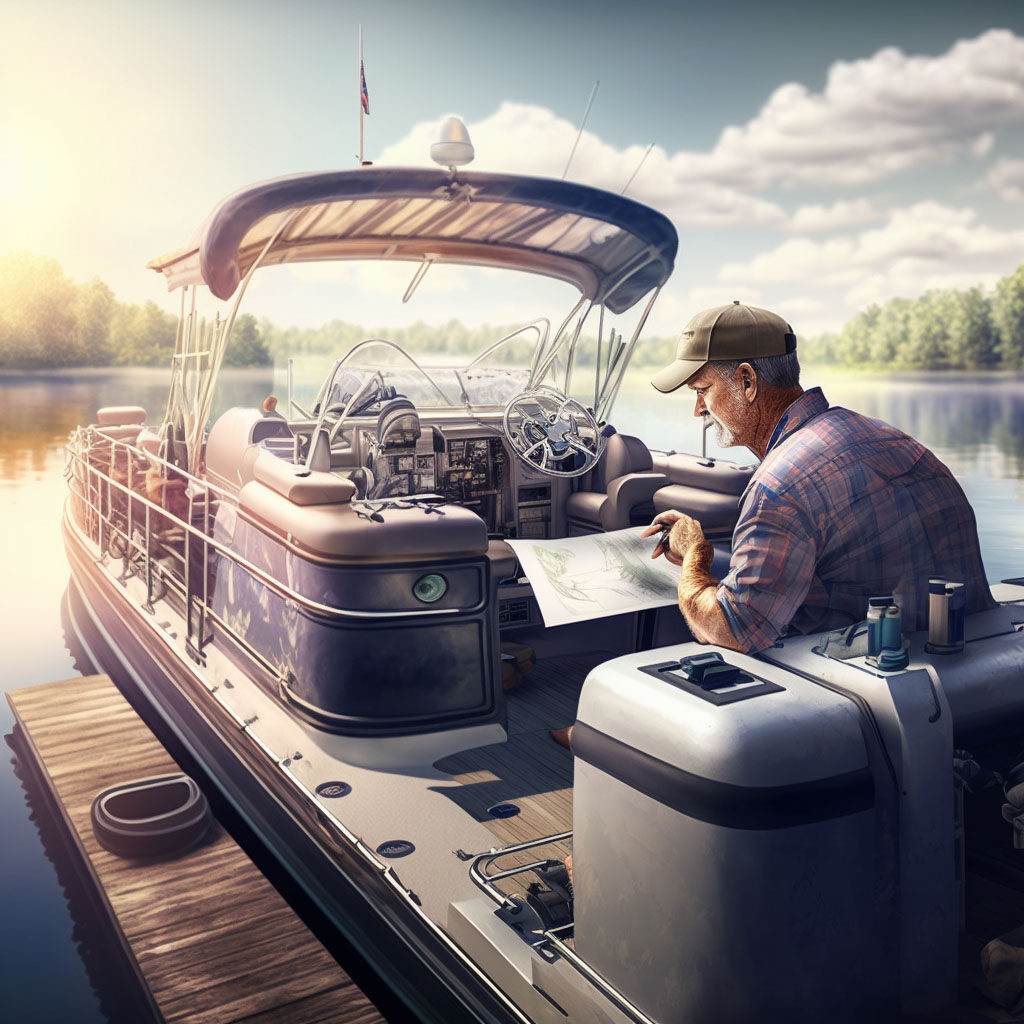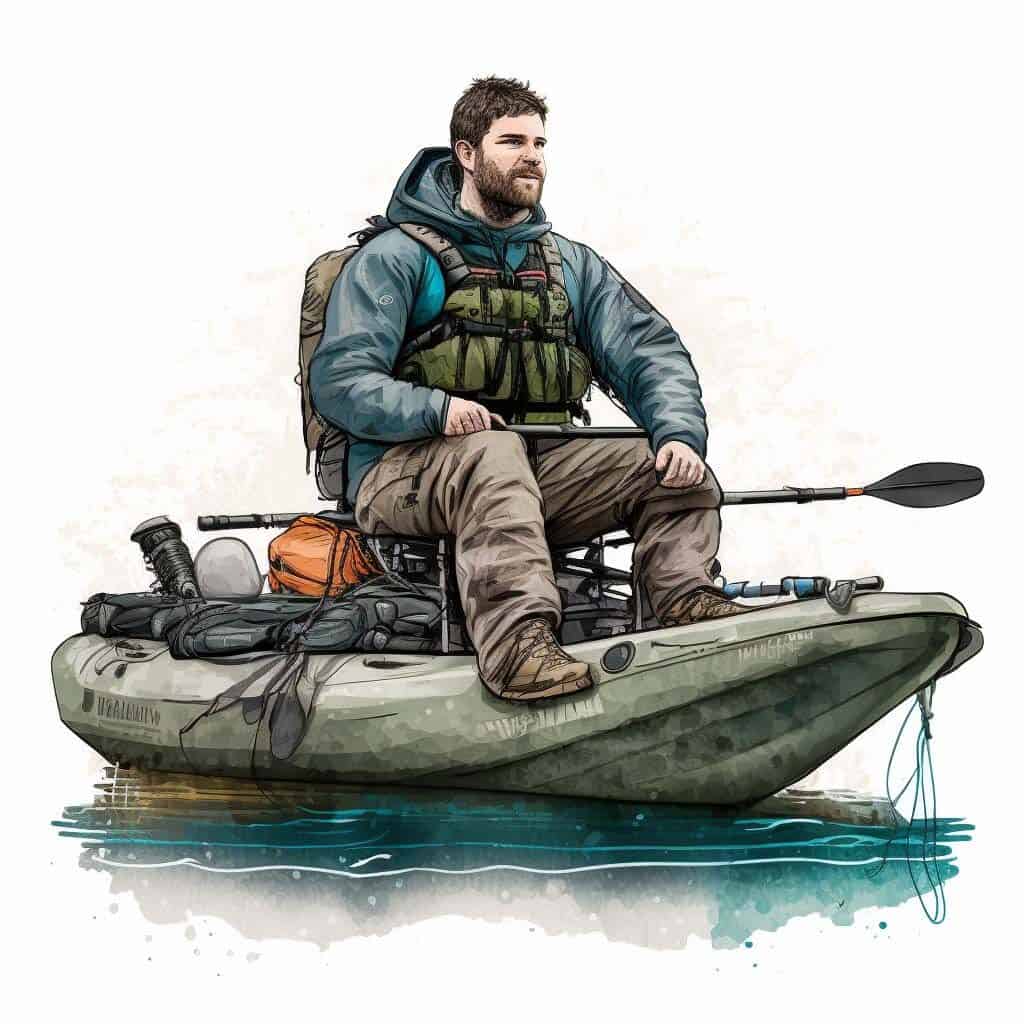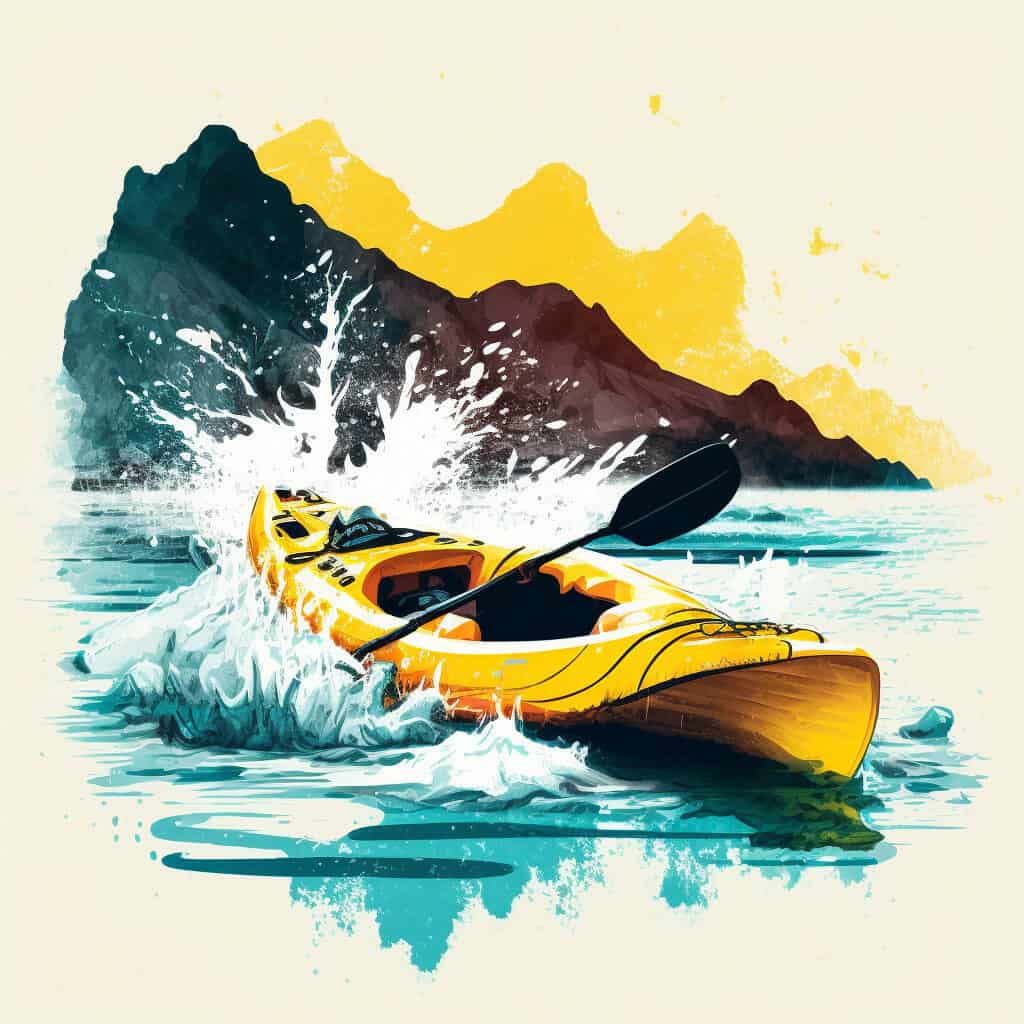Many people use canoes. Canoes are used for activities such as fishing, leisure trips, competition, camping, and other recreational uses. The canoe is most commonly used in inland waters like lakes, reservoirs, rivers, and wetlands. However, there are canoe styles out there that enable them to handle harsh sea conditions. So, can canoes go in the ocean?
Yes, canoes can go in the ocean. However, staying close to the shore is a smart idea. Venturing out too far in the ocean can lead to trouble or even worse. Some canoes are better suited for open water, such as a shallow v- hull canoe, because it is more buoyant than other canoes, and it is designed so that it can maneuver through tricky waters and waves.
Before taking your canoe out on the ocean, there are many things to consider, such as type of canoe, weather, safety gear, and experience. We will cover that today in this article, along with some other helpful tips for taking your canoe out on the ocean. So, If you are ready, let us move on to today’s topic of can canoes go into the sea!
Can Canoes Go In The Ocean?
As discussed earlier, we discovered that yes, canoes can go in the ocean. However, not every type of canoe is suited for the sea. If you are serious about canoeing in the ocean, then the best kind of canoe would be the
- Shallow v – trigger canoe
- Shallow arch bottom
- Flare sided
Let’s take a look at why these canoe types are more suited for the ocean.
Shallow V Hull
- Excellent rough water performance
- Great tracking
- Most versatile hull cross-section
- Ability to tune ( lean hull into turn, paddle straight up)
- Impeccable final stability
- Increased hull efficiency due to rigidity
- Hull designed to cut through water
- Ability to deflect waves
Shallow Arch Bottom
- Easy to Maneuver
- Good stability
Flare Sided
- Resist tipping
- Deflect waves for a drier outing
- Good final stability
All three canoe types are suitable for the ocean; however, shallow v has a few more benefits than the other two.
Since we listed the best types for ocean canoeing, let’s take a look at the worst kinds to take out on the ocean and should not be taking out on the sea.
- Flat bottom
- Round bottom
- Straight sides
Here are some reasons why the above types are not suitable for the sea.
Flat Bottom
- Vulnerable to wind
- Does not do well with waves
- Vulnerable to leaning
- Difficult to avoid capsizing once
Round Bottom
- Difficult to balance in upright position (especially for novice paddlers)
- Initial stability is very poor
Straight Sides
- Long reach to the water
- Vulnerable to wind
There you have it, folks. The best and worst types of canoes to take out on your ocean adventure. There is a lot to think about before taking a canoe out on the ocean. You want to make sure you get the right one for you. Make sure to do your research!
Things To Consider
There are things to consider before taking canoes out to the ocean that ranges from weather to experience. Let’s paddle on, shall we?
Weather
The weather is an essential factor when considering canoeing in the ocean. It would be best if you were well equipped for the weather conditions. Here are some critical conditions to look out for before venturing out.
- Water temperature
- Poor visibility
- Distance from help
- Rapid changes in the weather conditions
Keep a close eye on the conditions while out and stay close to the shoreline. Do not let the shoreline disappear on you. The weather can change before you know it, and you do not want to be caught out on the water if the weather decides to act up.
Safety Gear
It is essential to have safety gear with you on the water at all times. Safety gear can save your life. Here is a list of required safety gear as per the Coast Guard:
- Personal Floatation Device (always wear a PDF when on a vessel)
- Visual Distress Signals
- Sound Producing Device
- Navigation Light
- To Be Aware Of Navigational and Pollution Rules and Regulations
Other helpful safety gear is as follows:
- Emergency Communication: Radios
- Crew Overboard Recovery Gear
- Wet and dry suites
- Spare Paddles
- pFlares
- Food
- Water
Canoeing Experience
Next comes your experience with canoeing. If you are an experienced canoer, then you know the precautions you must take. If you are a novice or not very experienced, you will have to be cautious and understand what you are getting into. Here are essential skills that you should have for canoeing:
Learn low brace:
The low brace is an excellent skill to have, especially when you encounter rough waters. This skill can prevent your canoe from capsizing and make you feel more at ease when out in your canoe. See below for a quick explanation of the low brace:
- Extend paddle to a 90-degree angle for the canoe. Your top hand should be in front of your stomach
- Hit the water with the backside of the blade. When done the right way, your knuckles will be pointing towards the water
- Lower your head towards the shaft of your paddle while leveling out the canoe with your knees
- Once the canoe is leveled, swing your head forward over the canoe and resume stable paddling posture.
Choose the right paddle:
Choosing the right paddle is vital for canoers. Paddles are used for different types of canoeing and conditions. If you were to choose the wrong one, it could cause trouble for you.
If you are a beginner, then the best type of paddle would be a beginner paddle. Make sure to do your research first before buying a paddle; you don’t want to end up with one for white water rafting.
Forward stroke:
This stroke will take some practice at first. But once you get the handle of it, you will be able to pull water efficiently while using core muscles for power to reduce arm fatigue. As we know, arm fatigue can happen quite quickly.
J-Stroke:
The J-stroke will make you feel more at ease on the water. You will be able to stop to alternating sides and steer the canoe with ease. You can use this if you are solo paddling or used when you are in the stern of a tandem canoe.
Have a rescue plan:
Accidents like flips or capsizing can happen to the best of us, so we want to be prepared before going out. Have a rescue plan is a smart thing to have and could save lives. Gather up your mates and research a good canoe rescue and practice to be ready if you need to rescue someone while out in the canoe.
Final Thoughts
Today’s question was, can a canoe go in the ocean? We have discovered that yes, a canoe can go in the ocean. However, there are many things to consider, like the best type of canoe for the sea, weather conditions, and safety.
Most importantly, stay close to the shoreline and never let it disappear from your sight. As mentioned, the weather can turn quite quickly, and you do not want ever to be caught out at sea, especially in a canoe.
Always let someone know when and where you will be going out in the canoe (or any other type of water), as well as when you expect to be back.
I hope you found this article informative and helpful. Check out Boating Guide’s other great articles, and don’t forget to subscribe and remember that sharing is caring!
Until next time, stay safe and have fun!
Frequently Asked Questions
Do canoes tip over easily?
Canoes can tip over quite quickly depending on the weather conditions, unevenly distributed weight on the canoe, movement by passengers that cause an unbalance, collisions, and by someone who may get distraught being on the canoe.
However, this does not mean that a canoe will tip every time you set out for a trip. Most canoes do not tip over because people have trained themselves to distribute the proper weight throughout the canoe, not have freakouts that will cause the vessel to tip, and of course, watch out for the weather and be aware of any potential collisions.
Where should the heavier person sit in a canoe?
The heavier person should sit at the back of the canoe. Sometimes this may be difficult because the back is where the steering takes place and where the more experienced canoer should sit. Therefore the heavier person should also be the more experienced canoer.
Can one person use a canoe?
Yes, one person can use a canoe. There are single-person canoes that you can buy. However, it is harder to handle a canoe with only one person, but it is not an impossible task with the right amount of training and motivation.
Canoers with a lot of experience do well in a one-person canoe, while someone who is a beginner should stick to a two-person canoe.
Sources
- https://www.rei.com/learn/expert-advice/canoe.html – Accessed Dec. 2, 2020
- https://myccr.com/ – Accessed Dec. 2, 2020
- https://www.oldtowncanoe.com/buying-guide/canoe- Accessed Dec. 2, 2020
- https://www.madrivercanoe.com/us/experience/faq/content/canoe-design-hull-design – Accessed Dec. 2, 2020
- https://www.canoeandkayakdirect.com/6-important-skills-new-canoeists/ – Accessed Dec. 2, 2020
- https://www.liveabout.com/where-to-sit-in-a-canoe-2555941- Accessed Dec. 2, 2020
More Great Articles To Read From Boating Guide
Crab Island by Pontoon: A Fun Watery Boating Guide Destination in 2024
Upgrade Your Boating Experience: Adding a Third Pontoon Made Easy!
As the sun sets over the tranquil waters, the gentle hum of the engine and…
How Long Does It Take A Canoe To Go… (Canoe Calculator Here)
You asked, and we answered: Here’s a calculator to determine how long your canoe trip…
In-Depth Review of the Pelican Sentinel 100X Fishing Kayak: Pros, Cons, and Performance
As an avid angler, I understand the importance of having a reliable and durable kayak…
How To Put A Kayak In The Water – The Ultimate Guide For New Kayakers
Kayaking is a fantastic way to explore the outdoors and enjoy the water, but putting…
Best Cruising Catamarans For Couples
Looking for the best cruising catamarans for couples? Are you looking for the best spot…
Boat Hull Types – Which Boat Hull Is Best?
How Fast Can Canoes Go? We Find Out (With World Records).
Are Bass Boats Good For Shallow Water?
Staying Safe On A Catamaran: 24 Essential Tips





















